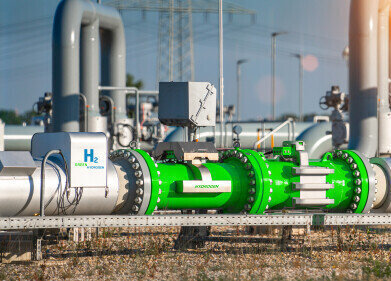Biofuel industry news
How is the Quality of Crude Oil Determined?
Mar 02 2022
With some crude oils containing thousands different hydrocarbon compounds, characteristics and quality can vary enormously between blends. A variety of physical and chemical factors influence the value of oil and ultimately, determine quality and price. Below, we spotlight some of the most important.
API Gravity
American Petroleum Institute (API) gravity measures how light or heavy liquid petroleum is compared to water. Liquids with API gravity of more than 10 are classed as “light” and float on the surface while liquids with API gravity of less than 10 are considered “heavy” and sink to the bottom. The ASTM D287 Standard Test Method for API Gravity of Crude Petroleum and Petroleum Products (Hydrometer Method) is one of the most widely used techniques for testing API Gravity.
Pour Point
Pour point measures the temperature at which the flow characteristics of a petroleum product are compromised. ASTM D97 is one of the most common methods used to measure pour points for crude oil.
Sulphur Content
The terms “sweet” and “sour” are used to describe the sulphur content of crude oil. The element is considered a contaminant as it generates sulphur oxides when burned. Under New York Mercantile Exchange guidelines, sweet crude contains less than 0.5% sulphur and anything higher is classed as sour.
Vapor Pressure
Vapour pressure testing is often used to determine the quality of oil. Methods such as ASTM D5191 measure the evaporation rate of petroleum-based liquids.
Viscosity
The viscosity of crude oil can vary significantly, ranging from fast-flowing liquid to heavy, tar-like blends that are almost solid. This parameter measures the “thickness” of crude oil and is influenced by chemical composition, temperature, pressure and the presence of dissolved gas. Generally, decreases in API gravity translate to an increase in viscosity.
Total Acid Number (TAN)
TAN is a parameter used to measure the amount of potassium hydroxide needed to neutralise acids in crude oil. The final number determines the acidity of a blend and is often used by refineries to establish the quality of petroleum products and assess the risk of corrosion.
Metals Analysis
Crude oils contain a myriad of metals, including copper, iron, zinc, lead, cobalt, aluminium and more. Some are desirable and others are considered contaminants. Metals analysis tests offer an in depth profile of crude oil products and are often used to establish quality and set a price.
Over the past two years oil producers have been forced to explore different product lines, including alternative fuels. Find out more about how the pandemic has reshaped the international energy market in ‘Recent Effects of COVID-19 on Alternative Fuel Trends Worldwide’.
Digital Edition
PIN 26.1 Feb/Mar 2025
March 2025
Analytical Instrumentation - Elemental Analysis for Quality and Process Control at Refineries, for Lubricants and Wear Metals in Engine Oils - Synthetic Lubricants: New Developments - Scaling...
View all digital editions
Events
Apr 08 2025 Birmingham, UK
Apr 08 2025 Kielce, Poland
Apr 08 2025 Ravenna, Italy
Apr 08 2025 Southampton, UK
Apr 08 2025 London, UK



















